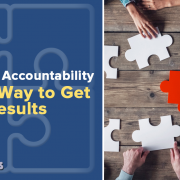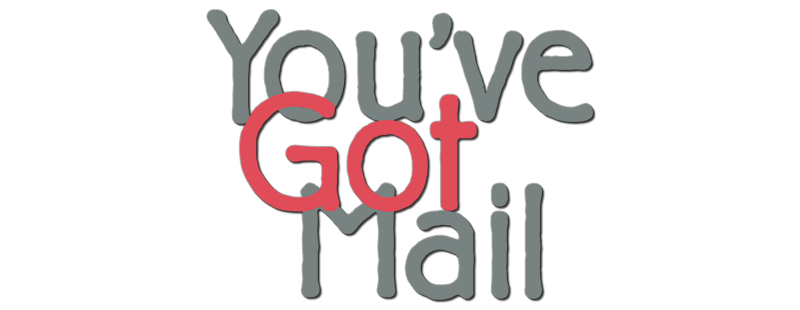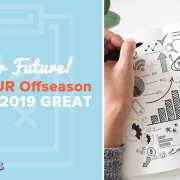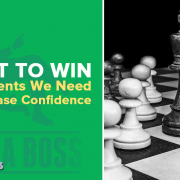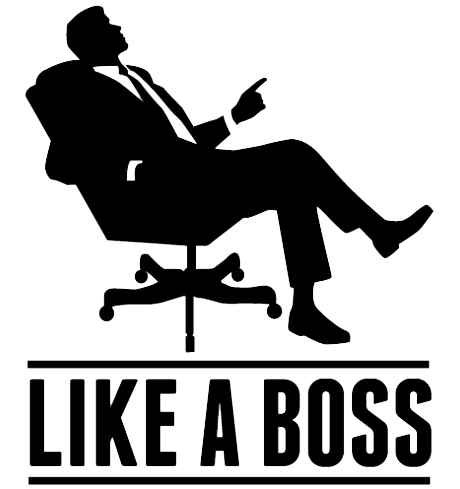Leadership Accountability – A Great Way to Get Better Results
Leadership is something that I talk about quite a bit on this blog. Most recently, I’ve used the Colts and general success in the NFL as case studies. We’ve looked at how the new leadership has changed the culture to one of winning. We’ve also discussed how the “offseason” can be equally important to success as the actual “season” as well.
But how do you get people to buy in and commit to the plan? How do you actually get moving in the right direction?
How do you hold people responsible to obtain the desired results?
There’s a simple word that many teams use to describe the solution to this: accountability.
Why Accountability?
There are several reasons why a person would want to be held accountable for their actions. There’s networking involved, sure. Someone that’s accountable will tend to build better relations than someone who isn’t. But there’s another thing. Accountability makes most of us perform better. Simply put, when we have accountability, we move from intentions to actions. And even more than this, you strengthen a feedback loop that enables you to get better and better.
3 Levels of Accountability
Personal Accountability
Now when we’re talking about accountability, we’re all familiar with the first level: personal accountability. At this level, we leverage accountability with ourselves, another individual, or a group of individuals to achieve individual desired results. So, for example, we use personal accountability when we’re wanting to lose weight by going to the gym more. Or we might use it in mastermind when all the members have different goals in their own business.
Team Accountability
The next type of accountability is team accountability. At this level, not only are you accountable to your own goals, but you’re accountable to the goals of the team. Meaning, not only are you getting something out of what you’re committing to do, but your teammates are expecting you to follow through. For example, in sports, if you don’t do what you’re supposed to do in a given situation, then it gets harder for your teammates to rely on you in the future. So it’s pretty obvious, I think, that at this level, it’s imperative for us to meet or even exceed the expectations of our team members.
Leadership Accountability
The next and final level of accountability is called leadership accountability. At this level, it’s your job to manage the team and help its members not only stay accountable to themselves, but to the team as well. A leader who uses this type of accountability regularly will often be looked at as a servant leader. For example, if you were the manager and/or owner of a restaurant, you would have to make sure that the place runs as efficient as possible. Your job isn’t to do a particular job like washing dishes or making the actual food. Your job is to make sure that those on the team who are in charge of a particular job are actually able to do their jobs without you or someone else doing it for them. You need to be able to give 10% with the wait staff, 15% with the chefs, 8% with the cleaning crew, etc. However, when those people need to be relieved, it’s your job to be able to get in there and do their job.
As a leader who wants to practice more accountability, keep this idea in mind: When you pay attention to others and how they’re doing, you’ll get respect. When you expect them to perform at a certain level, you’ll get results.
Characteristics of Accountable People
Now that we’ve looked at why you’d want to use accountability to move your team forward, let’s look at the characteristics of individuals who are accountable.
- They are consistent. People who are accountable follow through on what they say they’ll follow through on.
- They have credibility. Being consistent with your actions says something about who you are as a person. However, if you ever wain on doing what you say you’re going to do, then there’s a good chance you’ll credibility.
- They improve performance of the team as a whole. Have you ever known someone that when they’re a present part of a team, the team just seems to be in a more positive mood when they’re around? That’s the impact that a credible and consistent leader can have!
Easy enough to say that if you or your team members illustrate these characteristics, then they have what it takes to be accountable.
Characteristics of Non-Accountable People
However, on the flip side, there’s some folks that you can’t expect to be accountable. Here are some characteristics of these individuals:
- They make excuses. Let’s face it, you probably know plenty of people who are good at making excuses. Would you want them part of your team to actually get something done? Probably not. When people use excuses, it often becomes more of a deterrent than anything else. Even if they’re good reasons for not getting something done, they still didn’t get something done that they said they would.
- They play the victim card. If they blame anything or anyone else for not being able to follow through on a commitment, then they’re essentially saying that they’re not responsible. The most accountable people always take the blame even when they’re not the one at fault for bad performance.
- They favor appearance above all else. Something else you might notice about non-accountable people is that they have a tendency to make things look better than they really are. They tend to sweep things under the rug as opposed to really dealing with a situation. If you feel that your team is treading water and not really moving forward, it might be because someone isn’t truly pulling their weight.
Action Steps
So that’s what accountability can do for your team and how to spot it. If you’re working with a group to do amazing things, be on the lookout for these signs from potential or current team members. It will help you determine if you’re going to go places or simply spin your wheels.

